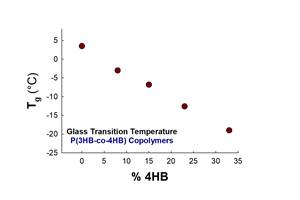I’ve always believed that ours was a fragmented industry. Even within the processing sector, injection molders, blow molders, film producers, etc. had less in common than one would imagine. Of course, all processors buy resin and have to deal with rising costs there. And all are facing difficulty in finding qualified people to work in their plants. And there’s the rising cost of health care, and those kinds of things.
But when you really dig deep and try to find the real pain points, you see less commonality. Even within a particular processing segment they tend to be different. Among film producers, for instance, the big issues for an extrusion house blowing bubbles for bags are far different than those making high-end food packaging film.
Then along came sustainability.
I remember my first thought when I heard the word. Well, actually I had two thoughts: “What does it mean?” and “Don’t bother telling me because we won’t be talking about it a year from now.” Then I had dinner during a trade show a couple of years ago with a sales executive for a major machine builder. “This thing’s for real,” he told me. “In time, it’s even going to change how processors buy equipment.” I winced a little to express incredulity. I think I also gave him an eye roll. I was disappointed that a guy with close to 40 years in the ´óĎó´«Ă˝ could be snookered by what I perceived as the most-recent PR gimmick, the newest flavor of the month.
He noticed my reaction and pointed a cautioning finger at me: “You watch.”
I’ve been reporting on plastics for more than 25 years. I started around the time the infamous garbage barge was floating around the East Coast in search of a landfill. I read and reported about attempts at biodegradability, such as starch-based materials, and looked at sustainability as just another passing fancy, as something that would last only for as long as it would take to get the environmentalists to calm down a bit.
Boy, did I get that wrong. Sustainability is real, and it’s here to stay.
And that’s a good thing. Now I view sustainability as a bona fide issue that connects all of the links of our fragmented industry. That’s a positive thing.
Think about it: Big-box retailers are pushing sustainability requirements to OEMs and packaging companies because they realize that being green is important to the people who shop in their stores. The OEMs and packaging companies respond by putting pressure on their suppliers—the plastics processors—for sustainable solutions. Processors react in a way that pushes resin and additive suppliers to develop more earth-friendly products, and machine builders to engineer equipment that consumes less energy. Some have pushed local governments to step up their recycling efforts.
If you’re still dubious, as I was, check out Executive Editor Matt Naitove’s report on the Innovation Takes Root conference sponsored by NatureWorks, the maker of Ingeo PLA bioplastics. It was the third such event, and it pulled in 329 attendees from 171 companies and 21 countries. NatureWorks presented 50 speakers and 32 exhibitors from materials, additives, and machinery vendors, processors, academia, food processing, and other sectors.
Matt came away from the event feeling, in his words, “that bioplastics are starting to graduate from the ‘emerging’ technology stage to market acceptance as everyday materials…that bioplastics are not a mere fad, a ‘green’ public relations stunt, or a feel-good eco-luxury, but legitimate tools of industry.”
Then check out my own story in this issue about a fairly new venture that has already achieved commercial success in applying cradle-to-cradle solutions for durable goods.
It’s here…it’s real…it’s staying … and it’s only going to get bigger. You watch
Related Content
How to Optimize Color Evaluation of Recycled Plastics
The right color measurement instrument and good working methods will minimize variability in color evaluation of PCR.
Read MoreFilm Extrusion: Boost Mechanical Properties and Rate of Composting by Blending Amorphous PHA into PLA
A unique amorphous PHA has been shown to enhance the mechanical performance and accelerate the biodegradation of other compostable polymers PLA in blown film.
Read MoreMultilayer Solutions to Challenges in Blow Molding with PCR
For extrusion blow molders, challenges of price and availability of postconsumer recycled resins can be addressed with a variety of multilayer technologies, which also offer solutions to issues with color, processability, mechanical properties and chemical migration in PCR materials.
Read MoreThe Importance of Mass Balance in Chemical Recycling
Approaches to mass balance can dramatically impact calculations of recycled content.
Read MoreRead Next
Sustainability Will Change Your Business
Do you have a sustainability officer yet? You might need one. It's probably even more likely that your customers have one, and you will have to pay attention to them if you want to continue to supply them with plastic parts or products.
Read MoreSee Recyclers Close the Loop on Trade Show Production Scrap at NPE2024
A collaboration between show organizer PLASTICS, recycler CPR and size reduction experts WEIMA and Conair recovered and recycled all production scrap at NPE2024.
Read MoreBeyond Prototypes: 8 Ways the Plastics Industry Is Using 3D Printing
Plastics processors are finding applications for 3D printing around the plant and across the supply chain. Here are 8 examples to look for at NPE2024.
Read More









